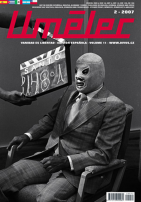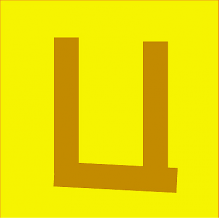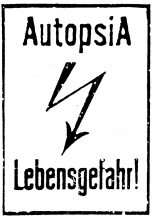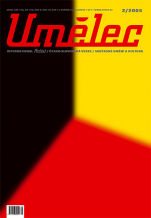|
María Alós has always understood that to be an artist and make art, one must recognize the strategies and demands to which any task must conform. For her Incognito series (2000-2005), Alós generated her own network of collectors and snuck her own self-portraits into spaces such as the Museum of Modern Art and the New Museum of Contemporary Art in New York; with Untitled Intervention (2001), she classifies an academic event’s audience according to their connection to the art circuit (administrator, salesman, and buyer). Alós’ first works demonstrate an interest in locating, exhibiting and using all the available systems of validating art. What does the aspiring artist have to do in order to become a part of the market, the press and the institutions? Where can they learn how to introduce themselves to these niches, while at the same time producing vital work, or at the very least something artistically competent? In 2000, while studying for her Master’s in Visual Arts at Syracuse University, Alós presented a graduation project that, although it elevated the artistic discourse beyond legal limits, uncovered contradictions inherent in the system when the project became, unexpectedly, an institutional problem. Her OBJECT-ionable: a temporal collection, makes reference to objects legitimized by their use in various artistic works, and their ensuing value as goods susceptible to being collected. She placed 17 acrylic boxes on shelves in the exhibition hall. Each box contained pieces and components literally taken from other artists’ work: a ruler came from an installation by Clido Mireles (Fontes, 1992); a hair, residue from a book and some cellulose paint came from Rachel Whiteread (Library, 1999); a sugar cube was from Tom Friedman (Untitled, 1999); and a Kitty ring was taken from Tracey Emin (My Bed, 1999). As the OBJECT-ionable flier explained, the work was the result of Alós’ compiling artworks by well-known or emerging artists. All of the objects featured were culled from larger exhibited pieces, and obtained with or without the consent of the authors or the galleries representing them. By describing the installation as curatorial, Alós defined a method of work that she continues to develop: the use of different agents interacting in order to legitimize an artwork as her own. In projects such as Pedestrian Museum (2002-2006), pedestrians were invited to donate objects to be publicly exhibited in different cities and countries, enriching a collection safeguarded by Alós and Nicolas Dumit Estevez, featuring the two artists working simultaneously as guards, curators and museum managers. By borrowing bits and pieces from other works, and placing them in a different context, Alós pretended to be returning their original status as mundane objects, and then enhancing their value by making them legitimate as artistic objects all over again, within a brand-new installation. Now, these pieces will become works of art by themselves, on their own terms. At the end of the installation’s run, every piece was going to be returned to the authors or owners (hence temporal collection), for them to decide whether or not to reincorporate them back into the original works, or whether to allow the exhibition to continue as individual pieces. Shortly after the inauguration, these pieces were stolen from the Joe and Emily Lowe Art Gallery at Syracuse University. The thieves sent an anonymous letter to the rector and the higher authorities of the university; copies were also sent to the different museums and galleries whose works Alós had “usurped.” The letter described Alós’ piece as an unredeemable crime, stating that the exhibition was mocking the “notions and traditions of art… presenting fragments of works that have been robbed from the most prestigious galleries and museums of New York.” It also stated that “these acts of vandalism have damaged the original works of art, altering some of them forever.” It went on to say that “even when Miss Alós is backing her actions with artistic rhetoric, in reality, she has committed a crime that represents a direct violation of the code of conduct of the students of Syracuse University.” It is curious how this end-of-term project, the main objective of which was simply to present the results of a carefully thought-out and realized idea, generated more threatening letters than it did press notes. Immediately, Alós received letters from the affected galleries, calls to order from university principals, and had to attend numerous meetings where she was considered a criminal. Speaking with the Syracuse police, Alós turned from being a victim to being a suspect and back again, as she had to declare the objects that she took, which in turn were stolen from her. OBJECT-ionable used recurrent strategies in contemporary art: it did not suppose the invention of a new form of criticism to be an artistic intervention. In the exhibition catalogue, Alós made reference to conducting a performance gesture, understanding her theft or loan—the actual act of gathering these materials—to be an important part of her project. From a purely legal standpoint, Alós’s taking of the pieces did not represent a crime, since the insurance of the original works identified the materials as replaceable goods. The ring taken from the Tracey Emin installation, for instance, carried a total value of three dollars. For Alós, these unexpected reactions generated distress. Universities teach transgressive artists their (occasionally controversial) working methods, but, in the end, they do not support students if their projects get them into trouble. This is despite the fact that some of Alós’ professors had actually obtained materials for her, in addition to being updated of her intentions throughout the semester by way of texts and essays delivered by Alós in class. This crisis demonstrated the discrepancy between the values the university postulates, their ‘avant-garde’ spirit, and the actual limits of legitimacy. Finally, the university did not support a work developed and presented within its own classrooms. The crisis ended with the thieves anonymously returning the materials, carefully wrapped, and stating—after accusing her of being a criminal, unworthy and a stranger to artistic merit—that her project had been re-appropriated by them, re-taking her theft of works of art as an intrinsic part of their own project. They also stated that the objects were not taken in order to damage the artist. Alós had to apologize to all the galleries and museums involved before returning the objects and pieces. This double act of vandalism, along with the subsequent accusations, visits to the police, and declarations of theft, was perpetrated as an answer to Alós’ piece, to demonstrate the inefficiency in the Lowe Gallery’s security, and at the same time promote the confused acts of an artists’ collective. In their anonymous letter, these defenders of artists’ integrity gave assurances that the stolen pieces had been damaged in an irreversible manner. Such a precise assessment of an artistic object is a pose that contradicts the thieves’ justifications of their actions as supposedly being within conceptual frameworks, and their claims that they are intervening in the works of other artists. Besides exceeding original expectations, the ultimate results of the OBJECT-ionable project allowed one to see that the legitimizing of an artwork goes far beyond any mere occupation of physical-institutional spaces: it showed that a piece can potentially be re-appropriated by third parties, and that projects are always subject to outside political circumstances and ideological factors. In 2003, during the fiftieth Venice Biennale, Miguel Angel Cortes, Secretary of State for International Cooperation in the Spanish government, said that the limits of art are defined by budget and law. This public servant was about to inaugurate a national pavilion, with the word ‘Spain’ hidden from view, and with access restricted to persons carrying a valid Spanish passport. That same year, Alós would again demonstrate what is hidden behind the forces that decide on the making and exhibiting of art. Her project MHN: Evaluation Journey identified various dilapidated places in Mexico City’s Natural History Museum in four categories—signs in different colors marked the spots that were damaged through lack of maintenance, damaged by the building’s humidity, and potential danger zones that could cause accidents. The objective of this intervention was to generate an awareness of the museum’s problems, and make evident the lack of funding available for Mexico’s public institutions. The museum’s Board of Directors, offended, decided to take down the piece just three hours before its premiere, claiming that the event was canceled due to “institutional problems.” Budget and law are both controlled by institutions—that is, by the people who run them. Above and beyond, there are interests and criteria outside that ultimately interpret the law and allocate money. These mechanisms are exposed by Alós’ work—these are individual points of view and those of the collective, the private and public sectors, and the artist, who must assume a position of power.
Recommended articles

|
|
There’s 130 kilos of fat, muscles, brain & raw power on the Serbian contemporary art scene, all molded together into a 175-cm tall, 44-year-old body. It’s owner is known by a countless number of different names, including Bamboo, Mexican, Groom, Big Pain in the Ass, but most of all he’s known as MICROBE!… Hero of the losers, fighter for the rights of the dispossessed, folk artist, entertainer…
|

|
|
An American poet was invited to the White House in order to read his controversial plagiarized poetry. All tricked out and ready to do it his way, he comes to the “scandalous” realization that nothing bothers anyone anymore, and instead of banging your head against the wall it is better to build you own walls or at least little fences.
|

|
|
Borrowing heavily from fairy tales, fables and science fiction, the art of Magda Tóthová revolves around modern utopias and social models and their failures. Her works address personal and social issues, both the private and the political. The stylistic device of personification is central to the social criticism emblematic of her work and to the negotiation of concepts used to construct norms.…
|

|
|
"In Cameroon, rumours abound of zombie-labourers toiling on invisible plantations in an obscure night-time economy."
|
|



































 We Are Rising National Gallery For You! Go to Kyjov by Krásná Lípa no.37.
We Are Rising National Gallery For You! Go to Kyjov by Krásná Lípa no.37.
Comments
There are currently no comments.Add new comment